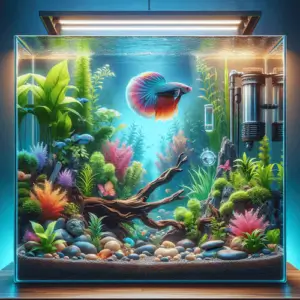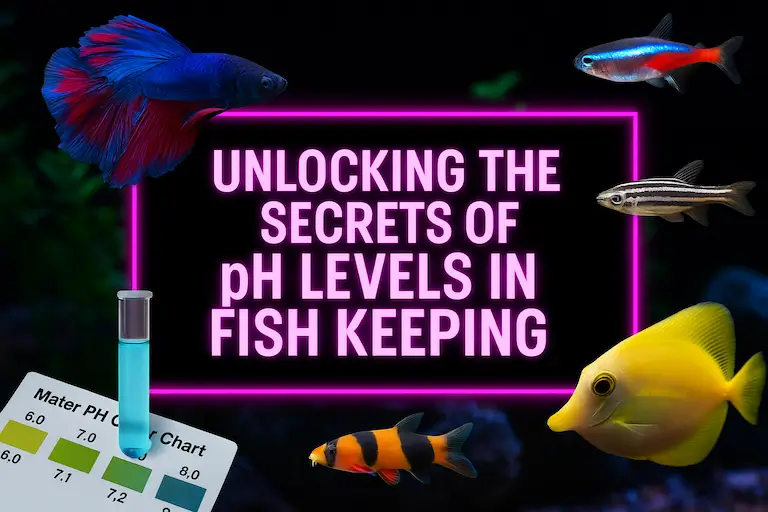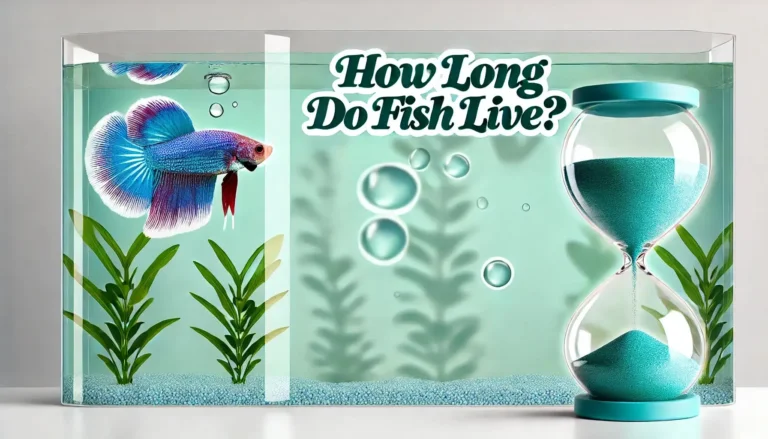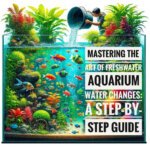Which Is Best Wild-Caught vs. Tank-Bred Marine Species
Reef aquariums are not only mesmerising additions to homes and offices but also microcosms that can raise awareness about marine conservation. One critical decision that hobbyists face is choosing between wild-caught and tank-bred marine species. This choice has significant implications for both the health of their aquariums and the broader environmental impact on ocean biodiversity. In this comprehensive guide, we will delve into the differences between wild-caught and tank-bred marine organisms, discussing their benefits, drawbacks, and the role aquarists play in marine conservation.
Understanding Wild-Caught and Tank-Bred Marine Species
Wild-Caught Marine Species are collected from their natural habitats in the ocean. This method has been traditional in the aquarium trade for decades, providing a wide variety of species to enthusiasts.
Tank-Bred Marine Species (also known as captive-bred), are born and raised in aquariums or similar controlled environments. This practice has been gaining traction as it often presents a more sustainable option.
Pros and Cons of Wild-Caught Marine Species
Pros:
• Diversity: Wild-caught specimens can offer greater variety in species, especially rare or exotic types that are not typically bred in captivity.
• Economics: In some regions, the collection of wild-caught species supports local economies, providing jobs and income for communities.
Cons:
• Ecological Impact: Over-collection can lead to declines in natural populations, damaging delicate reef ecosystems.
• Health Risks: Wild-caught species often undergo significant stress during capture and transport, which can lead to higher mortality rates and the spread of diseases to other aquarium inhabitants.
• Ethical Concerns: The capture process can be invasive and detrimental to the habitat, raising ethical concerns about the treatment of marine life.
Pros and Cons of Tank-Bred Marine Species
Pros:
• Sustainability: Breeding species in captivity reduces the demand for wild-caught specimens, helping to preserve natural populations and ecosystems.
• Health: Captive-bred species are generally healthier and more accustomed to life in an aquarium setting, displaying less stress and higher survival rates.
• Conservation: Purchasing tank-bred species supports the development of breeding programs, including those for endangered species, contributing to broader conservation efforts.
Cons:
• Limited Variety: The range of species available from captive breeding programs is still more limited compared to what is available in the wild.
• Cost: Tank-bred specimens can be more expensive due to the higher costs associated with breeding and raising them in captivity.
Impact on Biodiversity
The choice between wild-caught and tank-bred species has direct consequences for biodiversity conservation. Wild-caught practices, when not managed sustainably, can lead to the depletion of species and damage to habitats. Conversely, well-regulated captive breeding can serve as a tool for biodiversity preservation by alleviating the pressure on wild populations and providing an alternative source for the aquarium trade.
Ethical Considerations
The ethics of using wild-caught marine life in aquariums involve complex considerations, including the welfare of individual animals and the broader ecological implications. Many aquarists are now choosing tank-bred species as a way to minimise their environmental footprint and support ethical practices in the hobby.
Economic Aspects
While the initial purchase price for tank-bred species might be higher, their acclimation to aquarium life often leads to lower long-term costs due to better health and reduced mortality. Economically, supporting tank-bred programs can also foster innovation and expansion in aquaculture technologies, which can eventually bring down costs and expand available species options.
Making the Right Choice
Deciding between wild-caught and tank-bred species involves weighing the conservation impact, ethical considerations, economic factors, and personal preferences. Aquarists should consider:
• Source Transparency: Knowing where and how the marine life was collected or bred.
• Conservation Status: Opting for species that are not endangered or threatened in the wild.
• Personal Ethics: Aligning choices with personal values regarding animal welfare and environmental sustainability.
Supporting Sustainable Practices
As the hobby and industry of reef keeping evolve, there is a growing emphasis on sustainable practices that balance the hobby’s enjoyment with ecological responsibility. Here’s how enthusiasts can contribute:
1. Education and Awareness
Educating oneself and others about the origins of marine species and the impact of their collection on the wild populations is crucial. Aquarists should be aware of the status of the species they keep, understanding which are categorised as vulnerable or endangered and avoiding those to help protect natural populations.
2. Support for Conservation Initiatives
Many conservation programs and research projects work towards sustainable aquaculture and marine life preservation. Aquarists can support these initiatives by participating in fundraising, volunteering, or simply by choosing suppliers who donate a portion of their profits to conservation efforts.
3. Choosing Certified Suppliers
Opting to buy from suppliers who adhere to ethical practices and have certification from recognised environmental or animal welfare organisations ensures that your marine pets are sourced responsibly. Certifications to look for include those from the Marine Aquarium Council or similar bodies that audit and certify operations based on sustainability.
Regulatory and Legal Framework
Understanding and adhering to local and international regulations is another critical aspect of choosing between wild-caught and tank-bred species. Many countries have strict guidelines and permits in place for the trading of marine species, especially those that are threatened or endangered. Compliance with the Convention on International Trade in Endangered Species of Wild Fauna and Flora (CITES) ensures that international trade in specimens of wild animals and plants does not threaten their survival.
Technological Advances in Marine Breeding
Advancements in marine biology and aquaculture technology have expanded the possibilities of what can be bred in captivity. Techniques such as larval rearing, controlled spawning, and genetic research have allowed breeders to increase the diversity and health of captive-bred species. These advancements not only make tank-bred species more accessible but also enhance genetic diversity within captive populations, which is crucial for the long-term sustainability of bred species.
Community Engagement
The reef-keeping community plays a pivotal role in shaping the industry’s future. Forums, clubs, and online communities are excellent resources for sharing knowledge and experiences related to sustainable practices. These platforms can also influence market demand by highlighting the benefits of tank-bred species and advocating for ethical sourcing.
Long-Term Impact on the Hobby
The shift towards more sustainable practices in reef keeping could lead to a significant transformation in how the hobby impacts marine ecosystems. As demand for tank-bred species grows, the pressure on wild populations could decrease, allowing for the recovery of over-harvested areas and the restoration of natural habitats. This, in turn, would contribute to a more positive public perception of the hobby as a force for good in marine conservation.
Conclusion
The decision between wild-caught and tank-bred marine species is more than a choice—it’s a commitment to the future of marine ecosystems and the sustainability of the reef-keeping hobby. By choosing tank-bred species, aquarists can enjoy their hobby while minimising their environmental footprint. However, when wild-caught species are preferred, ensuring that they are sourced sustainably and ethically is key. Ultimately, every choice made at the aquarium store reflects a vote for the kind of practices the aquatic community wants to support. Responsible reef keeping not only enhances the hobbyist’s experience but also contributes to broader conservation goals, safeguarding marine biodiversity for future generations.








